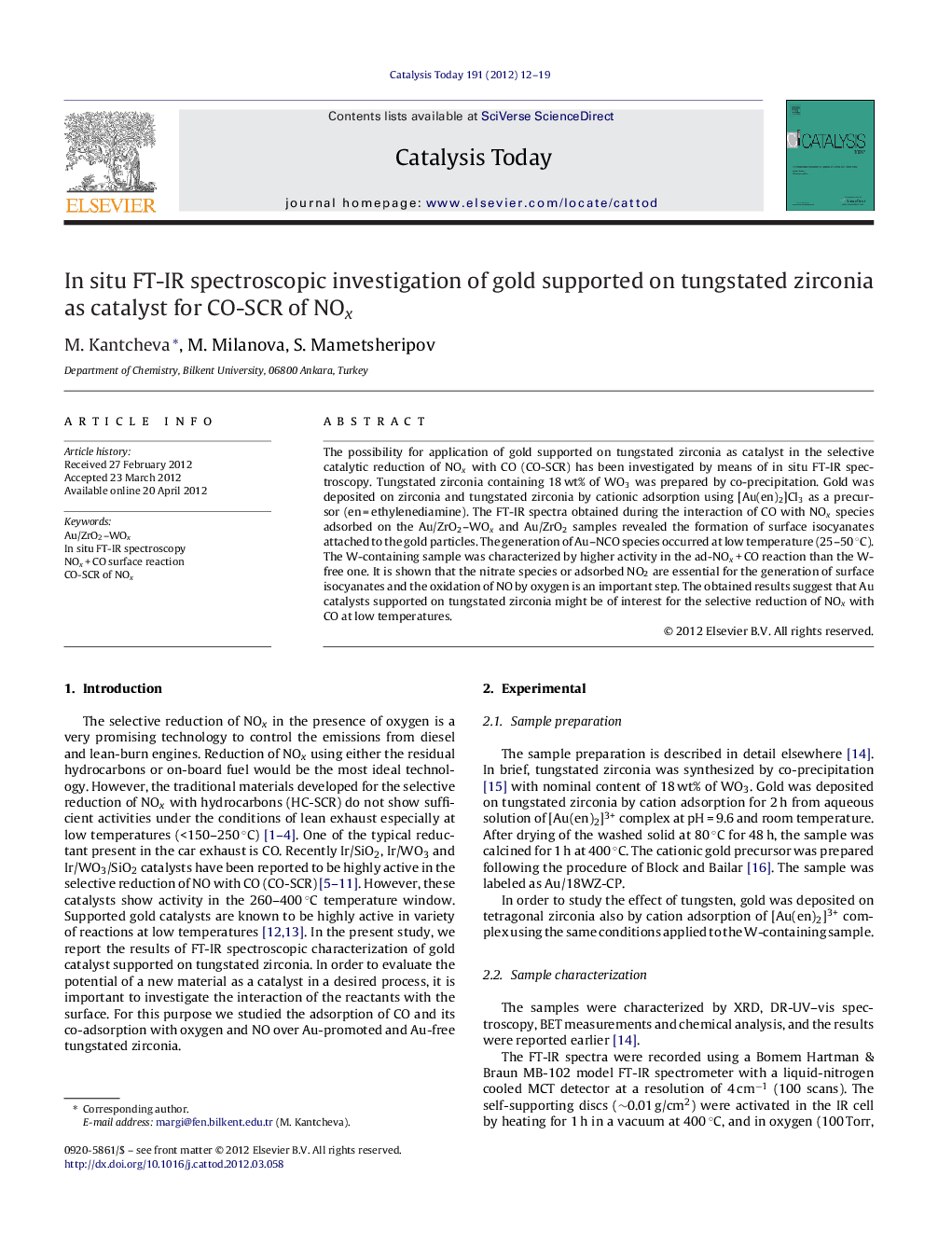| Article ID | Journal | Published Year | Pages | File Type |
|---|---|---|---|---|
| 55270 | Catalysis Today | 2012 | 8 Pages |
The possibility for application of gold supported on tungstated zirconia as catalyst in the selective catalytic reduction of NOx with CO (CO-SCR) has been investigated by means of in situ FT-IR spectroscopy. Tungstated zirconia containing 18 wt% of WO3 was prepared by co-precipitation. Gold was deposited on zirconia and tungstated zirconia by cationic adsorption using [Au(en)2]Cl3 as a precursor (en = ethylenediamine). The FT-IR spectra obtained during the interaction of CO with NOx species adsorbed on the Au/ZrO2–WOx and Au/ZrO2 samples revealed the formation of surface isocyanates attached to the gold particles. The generation of Au–NCO species occurred at low temperature (25–50 °C). The W-containing sample was characterized by higher activity in the ad-NOx + CO reaction than the W-free one. It is shown that the nitrate species or adsorbed NO2 are essential for the generation of surface isocyanates and the oxidation of NO by oxygen is an important step. The obtained results suggest that Au catalysts supported on tungstated zirconia might be of interest for the selective reduction of NOx with CO at low temperatures.
Graphical abstractFigure optionsDownload full-size imageDownload high-quality image (91 K)Download as PowerPoint slideHighlights► In situ FT-IR investigation of NOx + CO surface reaction over Au/ZrO2–WOx catalyst. ► Formation of Au–NCO species at room temperature during ad-NOx + CO reaction. ► Reactivity of Au–NCO species toward NO2 and effect of W. ► Au/ZrO2–WOx could be used as low-temperature catalyst for CO-SCR of NOx.
